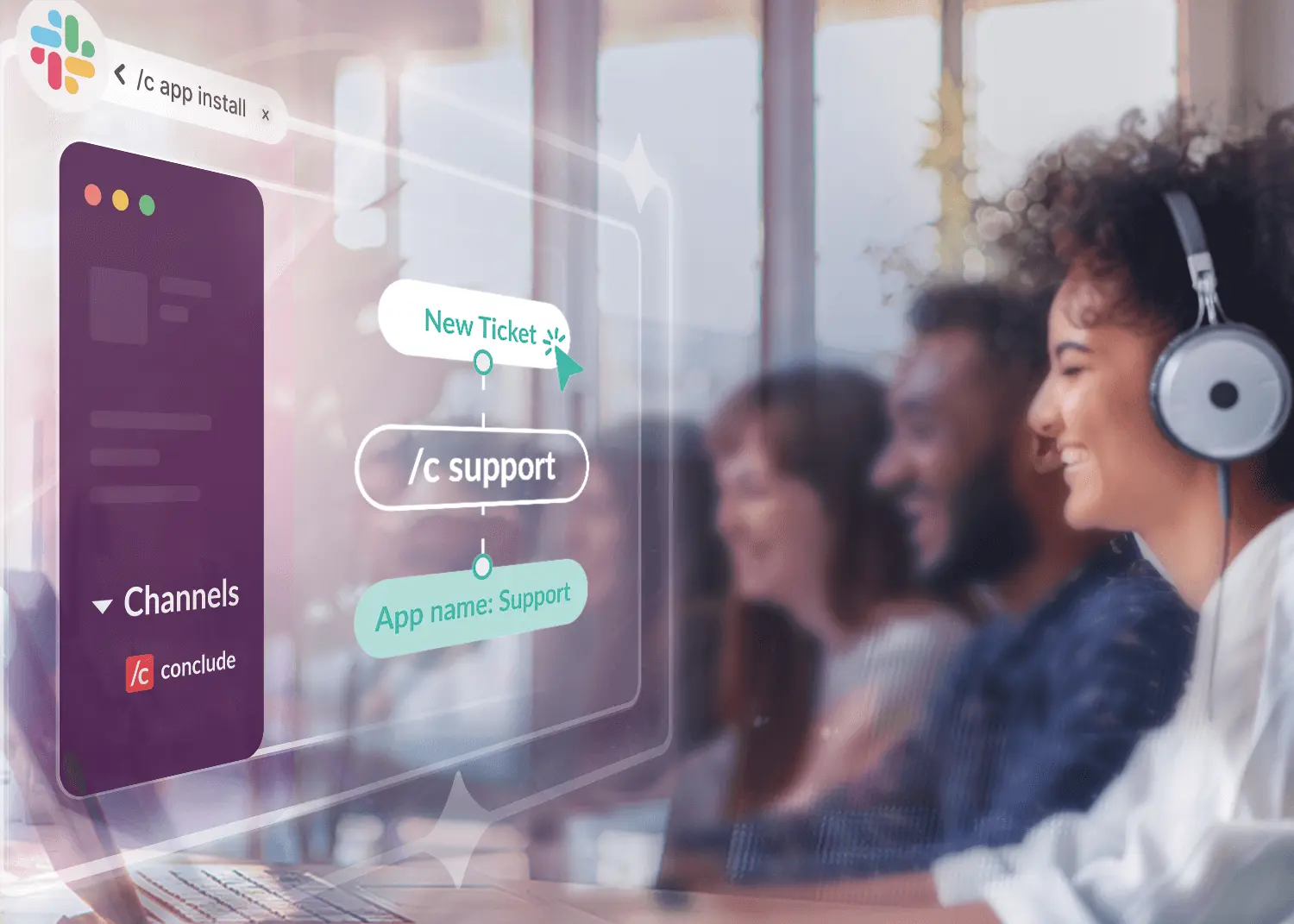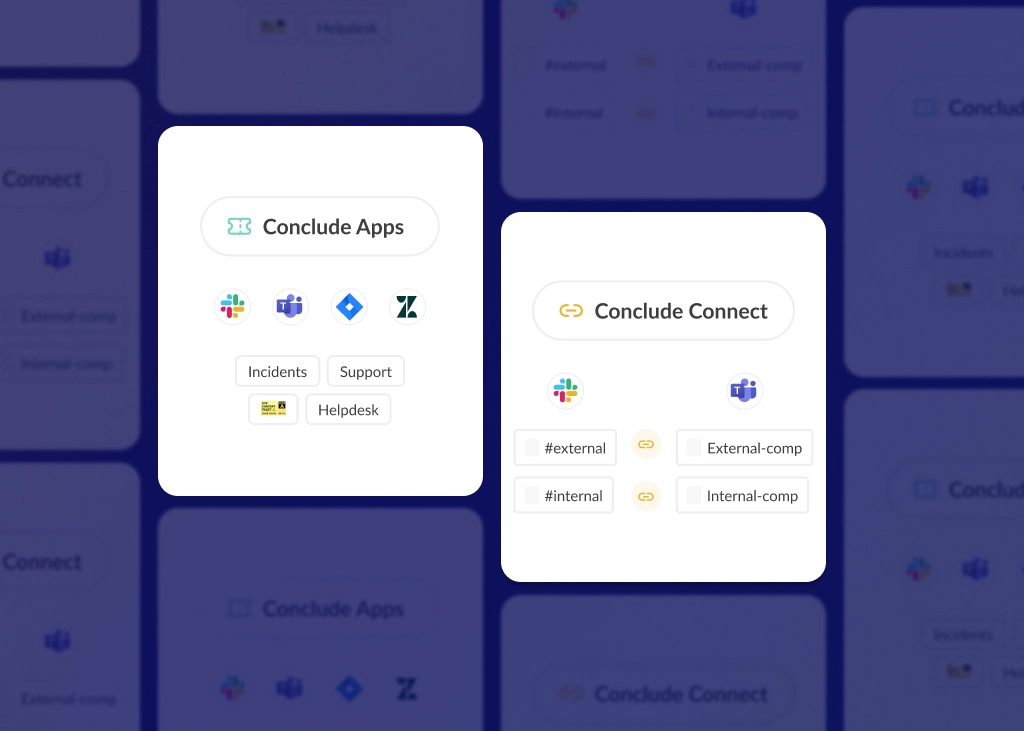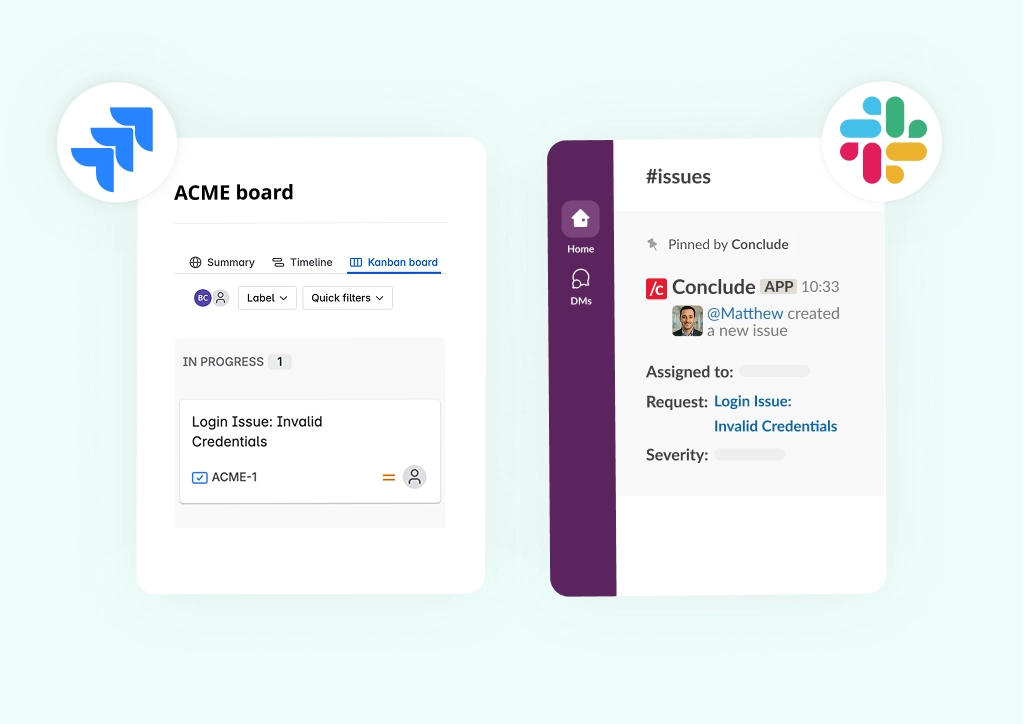Using Slack as a Ticketing System for Support Teams

Slack ticketing system solutions are becoming increasingly popular for teams that want to manage support requests, issues, and incidents directly within their chat workflow. While Slack is best known for improving internal collaboration, it’s now widely used as a lightweight, efficient ticketing system for both IT helpdesk teams and customer support.
Looking for the right Slack ticketing system for your team? Learn more here.
Meeting Modern Expectations
The support experience that involves days waiting for an email response, or spending a lengthy amount of time on hold, is almost gone. The expectation that customers will receive a quick and timely response is higher than ever.
According to HubSpot Research, 60% of customers define “immediate” support as a response time of less than 10 minutes.
Chatbots with AI integrations that answer customers’ most common questions are now more widely available, but when it comes to IT helpdesk or support, many customers still require a human response to solve their issues.
Customers will continue to seek quick resolutions to their issues, and delays can lead to frustration and, ultimately, a reevaluation of business partnerships.
Nowadays many businesses are expected to have fast and flexible systems that meet the urgent demands of their customers. A Slack ticketing system is a lightweight choice for many companies looking to scale efficiently – all that’s required are the right integrations.
Key Benefits of Using Slack as a Ticketing System
Using Slack for customer support in internal and B2B environments can improve communication flows and streamline problem resolution. Here are some of the key reasons to integrate Slack into your customer support strategy:
1. User-Friendly Interface
Slack is known for its intuitive design, which makes it easy for teams to adopt with minimal training. Since many organizations already use Slack for internal communication, extending its use to customer support is a natural progression.
2. Customizable Channels
One of Slack’s greatest strengths is its adaptability. You can tailor channels to fit specific support needs, such as:
- Dedicated channels for high-priority customers or complex issues
- Automated responses using Slack bots for quick answers to common questions
- Integration with help desks and CRMs to streamline ticket management and maintain comprehensive customer records
This level of customization ensures that your support strategy remains flexible and scalable as your business grows.
3. Enhanced Team Collaboration
Complex B2B customer issues often require input from multiple departments, including technical support, sales, and customer success teams. Slack’s collaborative environment makes it easy for team members to:
- Tag colleagues for quick input or approvals
- Share files instantly for real-time problem-solving
- Organize discussions using threads to keep conversations focused and efficient
This collaborative approach accelerates problem resolution and improves the overall customer experience.
4. Valuable Customer Insights
By using Slack for customer interactions, businesses can gain deep insights into customer behavior and preferences. Analyzing conversations can reveal:
- Recurring issues or frequently asked questions
- Customer sentiment and feedback patterns
- Opportunities for upselling or customer education
These insights enable support teams to anticipate customer needs, personalize interactions, and continually improve service quality.
5. Integration with Other Business Tools
The platform’s ability to integrate with a wide range of business tools and be transformed into a lightweight Slack ticketing system enhances productivity and efficiency. It connects effortlessly with platforms like:
- CRM systems (e.g., Salesforce) for centralized customer information
- Ticketing systems (e.g., Zendesk and Conclude) for streamlined issue tracking
- Video conferencing tools (e.g., Zoom) for escalating complex issues to virtual meetings
These integrations eliminate the need to switch between multiple applications, allowing support teams to stay focused on resolving customer issues more effectively.
Key Differences Between Internal and External Support
Slack Ticketing for Internal Support
This usually refers to issues inside an organization, including IT helpdesk tickets, issues, bug tracking and incidents. Many companies have their own internal solutions and may use a combination such as Jira, Zendesk, ServiceNow, or other Slack-native incident management apps.
Conclude Apps goes beyond incident management and integrates with Jira to manage different types of issues and activities. Tickets can be opened inside a dedicated channel as threaded messages, or as new channels which are “branched” from a main channel where the app is installed.
Learn more about Conclude Apps for Slack and Microsoft Teams here.
Slack Ticketing for External Support
Similar to Slack Connect, support solutions which manage external customer issues have previously been covered by tools such as Halp – which was acquired by Atlassian in 2020. Various companies have attempted to replace what Halp was providing, and while there are several good solutions on the market, many lack integration with Microsoft Teams or Zendesk.
In June 2024, Conclude launched a solution to address this pain point. Learn more about Conclude’s Slack customer support ticketing system with optional Zendesk integration here.
Chat in Real-Time with Customers
The adoption of Slack as a ticketing system for customer support has changed the way companies communicate. Previously, interactions were mostly limited to emails or dedicated support platforms. Using Slack has created a closer experience between support teams and their customers.
The immediacy of Slack enables businesses to interact with customers in real-time, offering a quicker resolution to their issues. This level of responsiveness is crucial for building trust and loyalty, however, without a structured ticketing system, Slack has the potential to descend into chaos.
Optimizing Slack for Customer Support with Conclude
Implementing Slack as a ticketing system for managing customer requests can transform the efficiency and responsiveness of internal or external customer support. Conclude can be added to your Slack workspace and includes templates for Incident Management, Support, Helpdesk, Jira and more.
Set up and optimize your Slack workspace using Conclude:
Create Dedicated Channels:
Start by setting up dedicated channels in Slack for different types of customer support requests e.g. #support or #support_companyname. Some examples could include channels for technical support, billing inquiries, and product feedback. Conclude allows you to manage these inquiries directly within these channels, making it easy to organize and prioritize support tickets.
Install Conclude:
Add Conclude to your Slack workspace (get started here). Once installed, you can add specific apps to the relevant channels using the command /c app install or see our Quickstart Guide for Slack for more. For external customer support ticketing, see the Quickstart Guide for Customer Support (from Slack).
Leverage Conclude’s Features for Support
Open Tickets From a Dedicated Channel:
Conclude lets users choose if they want to open a separate channel for the ticket which is branched from the primary channel, using the preferred naming convention. For example, typing /c new in the #support channel where an app is installed will open a new, temporary channel (ticket) which may look like #_support-1. From here, team members can collaborate to resolve the issue.
Convert Messages to Tickets using Threads:
Alternatively, any message within a Slack channel can be quickly turned into a support ticket using threaded messages. This feature ensures that no customer query goes unnoticed. Conclude focuses on simplicity within Slack, making it ideal for teams looking for a lightweight solution. Just use the appropriate command or emoji reaction to open a ticket and manage the customer request directly inside a thread from the main channel.
Assign and Prioritize Tickets:
Assign tickets to specific team members and set priorities (low, medium, high and critical), directly within Slack. This functionality helps to distribute workload effectively and ensure that the most important issues are addressed quickly.
Track Progress and Resolution Times:
Keep track of all your support tickets and their statuses within Slack and the Dashboard. This transparency is crucial for coordinating efforts and ensuring consistent follow-up on customer issues.
AI for Email Translation and Summarization:
Conclude allows emails to be sent to specific channels and an editable summary of a ticket to be automatically created. The key points of the customer issue are included in the ticket details and can be translated in up to 60 languages.
The Conclude Dashboard is where all tickets are permanently recorded, so no important information is lost. Once a ticket (channel) is closed and archived, it remains searchable in the Dashboard.
Developing an Effective Customer Support Process
Creating a robust customer support system within Slack requires more than just a conversational interface; it requires the integration of carefully selected tools and the implementation of automated workflows that can streamline support tasks.
By leveraging integrations with platforms like Zendesk and Jira, alongside Conclude’s capabilities within Slack, businesses can develop an efficient support process that responds to customer needs quickly and manages support tickets effectively.
Integrate Jira and Zendesk
Jira Integration:
For teams that handle technical support requests or need to track bugs or other kinds of feature requests, integrating Jira with Slack is a no-brainer. This connection enables the creation and management of Jira issues from within Slack, allowing for real-time updates on issue status and comments.
Zendesk Integration:
Connecting Zendesk with Slack allows support teams to receive and respond to tickets directly within Slack channels. Tickets opened in Slack will show up in Zendesk, with any comments or actions synced between both platforms. With this integration, external customers do not need to exit Slack to submit a ticket, ensuring a seamless flow from ticket creation to resolution.
Conclude is free to try for 14 days. Ready to get started? Book a demo here.
This blog was published on February 22, 2024 and updated on February 16, 2025.
 Sian Bennett
Sian Bennett

